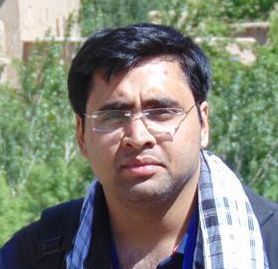Islamic Emirate of Afghanistan was the official name of the Taliban regime before being deposed by the US-led NATO forces in 2001. The Taliban has always insisted on calling itself the Islamic Emirate of Afghanistan. In June 2013, when its de-facto embassy in Doha, Qatar was founded, the Taliban insisted on calling it “the political office” of the “Islamic Emirate of Afghanistan.” The Taliban appeared in the southern city of Kandahar, Afghanistan’s second-largest, in 1994, two years after the mujahedin seized power in the country. The Taliban promised to bring order in the country and restore security. But they also enforced their ultraconservative brand of Islam. They captured Kabul in 1996 and two years later controlled some 90 percent of the country. In 1998, Taliban leader Mullah Mohammad Omar assembled some 500 Islamic scholars from across the country to draft a new constitution for the country. After three days of intense discussion, the scholars drafted a 14-page document; it was the first and only attempt by the Taliban to codify its views on power and governance. This document put forward the foundation of the Taliban’s Islamic Emirate’s core concepts.
In the document, power was centralized in the hands of an “Amir ul-Momineen,” or leader of the faithful. This supreme leader was the head of state and had ultimate authority. The constitution did not describe how such a leader would be selected or for how long he could serve. Also, it said the supreme leader must be male and a Sunni Muslim. Under the constitution, Sunni Islam was to be the official state religion, even though approximately 15 percent of the population are Shia Muslims. The document stated that no law could be contrary to Islamic Sharia law. The constitution granted freedom of expression, women’s education, and the right to a fair trial, but all within the limits of the Taliban’s strict interpretation of Sharia law. But the whole world witnessed how all these rights were disregarded during the Taliban rule. Often the Taliban in the name of Sharia law enforces the medieval time Pashtun tribal code of conduct called “Pashtunwali”. The Taliban negotiators are trying to convince the people that, in many ways, they are a different organization from the one that governed Afghanistan in the 1990s. But the reality is that most of their leaders are nevertheless committed to an extreme interpretation of Islam that is not shared by many Afghans.
Regardless of repeated claims that they support women’s rights, for instance, the Taliban has continued to attack girls’ schools. Moreover, despite Afghanistan’s rich pluralism and cultural mosaic, there is extremely little ethnic, religious, linguistic, cultural, and professional diversity within Taliban ranks. This absence speaks volumes. It clearly tells us through calibrated action rather than hollow rhetoric, who is actually welcome in the Taliban’s emirate.
Most importantly the Taliban have also failed to spell out a specific vision for the future of Afghanistan. And as usual, unable to present a program for governance, service delivery, or maintenance of rule of law. They continue to resort to vague and generalized statements, and have neither been able nor seem willing to clearly spell out their views on education, health, reconstruction, women’s rights, and beyond. The group currently sees itself as unique within the jihadist world in having defeated a superpower, the United States and forcing it to negotiate an exit. This has made them quite popular and a focal point within the jihadi world. At this point in time, the Taliban do not believe that change is necessary. Hence have no incentives to acknowledge the realities of the new Afghanistan as they believe that they have finally prevailed.
It will be a fantasy to think that the Taliban have changed their ways, despite being out of power for almost two decades. Taliban’s ultimate objective is to remove the current Islamic Republic and replace it with their Islamic Emirate, as well as implementing the same regressive policies that they enforced during 1996-2001. The Taliban has made it clear in talks that the Hanafi school of Sunni jurisprudence serves as the principal source of legislation, even though a sizeable section of Afghan society follows other schools of thought. The policymakers who are eager to make peace with the Taliban’s Islamic Emirates should not rely solely on political statements and positions taken by the Taliban’s diplomats in Qatar and elsewhere. Rather, they should focus on what the Taliban have actually done in the territories under their control. It has to be ensured that people’s hard-won rights are not sacrificed for the sake of a deal with the Islamic Emirate.
The views and opinions expressed in this article are those of the author.

The author is a columnist for the Middle-East and Af-Pak region and Editor of geopolitical news agency ViewsAround. He can be reached at [email protected].

